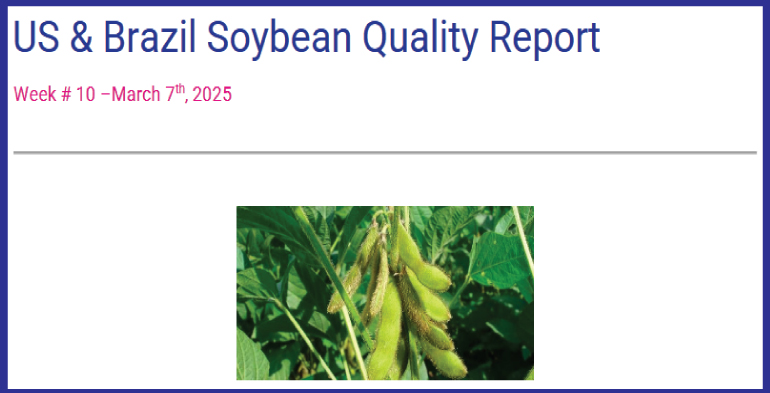
Summary
This report intends to compare quality results from US origin soybean and Brazilian origin soybean. The information from the US is uploaded directly from the FGIS Public database. The information from Brazil is collected from different surveyors. The quantities specified represent available information.
It does not include all soybean exports but represents a significant portion. This week, as usually, we continue comparing monthly quality from US and Brazilian Soybean. In addition, we have analyzed quality from February 2025 versus February 2024. We made this comparison by Country.
Finally, make a weekly quality comparison on US Soybean.
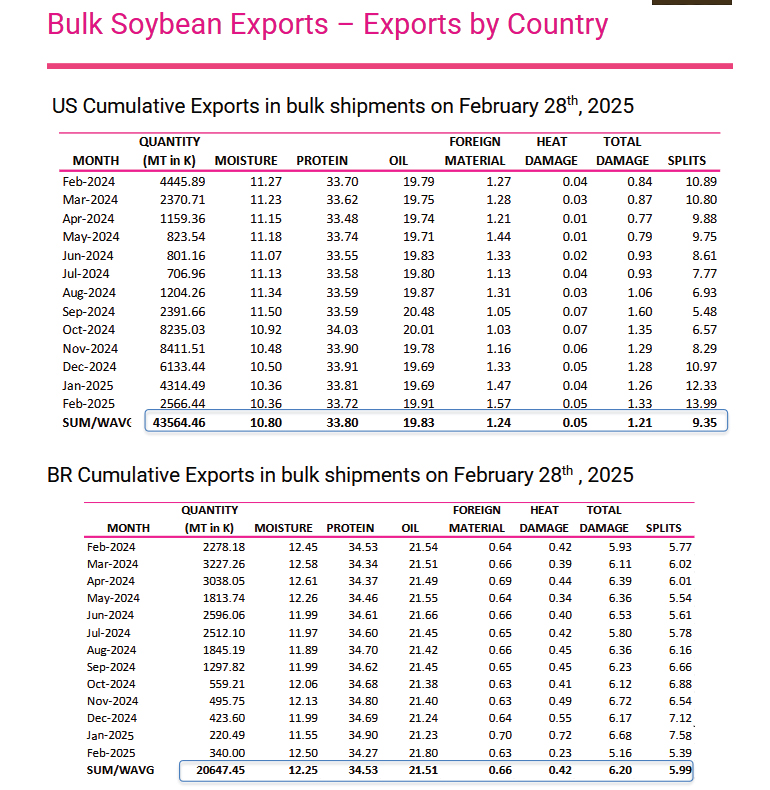
When we compare 2025/2025 shipments, Brazilian Soybean has 1.45% higher Moisture, 0.37% higher Heat Damage Kernels and 4.99% Total Damage Kernels. In addition, Brazilian Soybean has 0.73% higher Protein, 1.68% higher Oil, 0.58% lower Foreign Matter and 3.36% lower Splits.
February 2025 Quality – A comparison vs previous year
This week, we have analyzed quality values of February 2025 and then compared this information with February 2024’s quality variables. First, we compared values with the same
origin and then we did a comparison of the differences between Brazilian Soybean versus US Soybean.
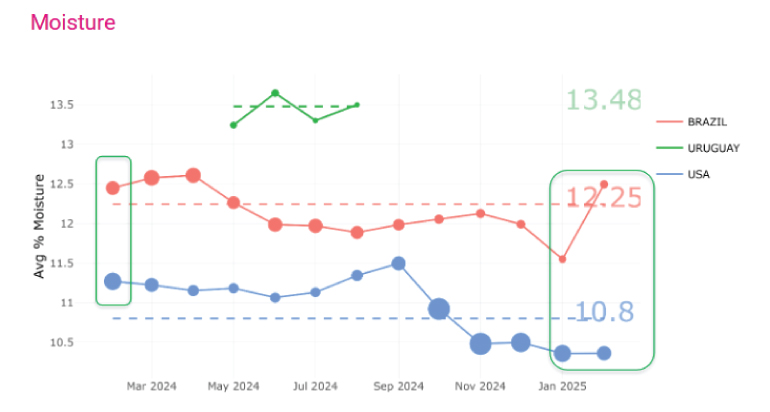
• Average Moisture of Brazilian soybean in February 2025 was 12.49% versus 12.45% in February 2024. Moisture in February 2025 was 0.04% higher.
• Average Moisture of US soybean in February 2025 was 10.36% versus 11.27% in February 2024. February 2025 had 0.91 % lower moisture.
• In February 2024 Brazilian Soybean had 1.18% higher moisture than US Soybean while this difference increased to 2.13% in February 2025
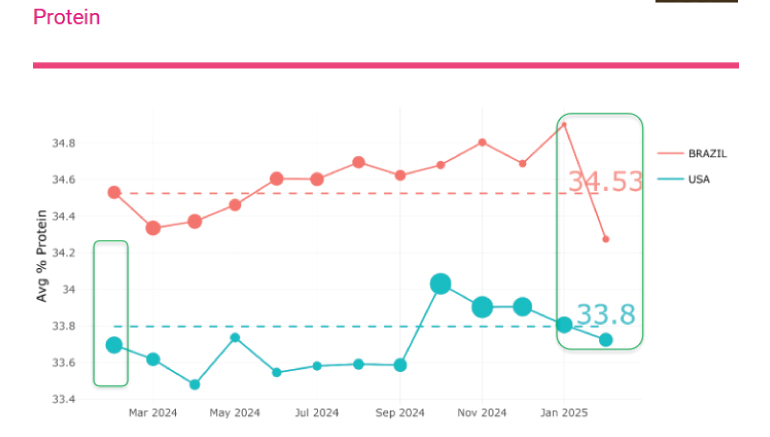
• Average Protein of Brazilian soybean in February 2025 was 34.27% versus 34.53% in February 2024. Protein in February 2025 was 0262% lower.
• Average Protein of US soybean in February 2025 was 33.72% versus 33.70% in February 2024. February 2025 had 0.02% higher Protein.
• In February 2024 Brazilian Soybean had 0.83% higher Protein than US Soybean while this difference decreased to 0.55% in February 2025
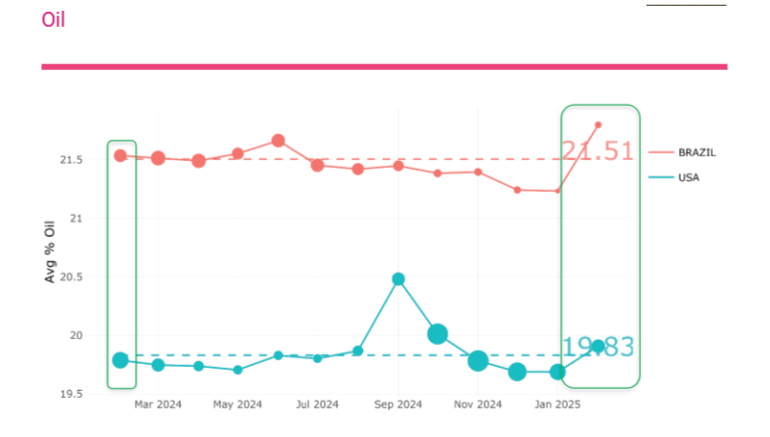
• Average Oil of Brazilian soybean in February 2025 was 21.80%. In February 2024 this value was 21.54%. February 2025 soybean had a 0.26% higher Oil content.
• Average Oil of US soybean in February 2025 was 19.91% versus 19.79% in February 2024. February 2025 had a 0.12% higher Oil.
• In February 2024 Brazilian Soybean had 1.75% higher Oil than US Soybean while this difference increased to 1.89% in February 2025
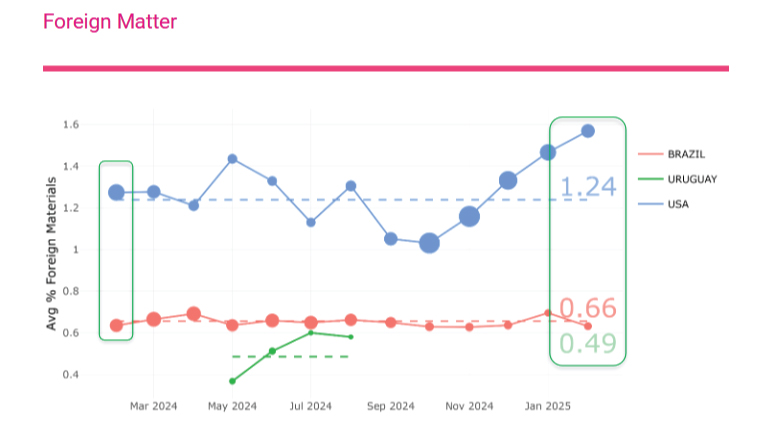
• Average FM of Brazilian soybean in February 2025 was 0.63% versus 0.64% in February 2024. FM content in February 2025 was 0.01% lower.
• Average FM of US soybean in February 2025 was 1.57% versus 1.27% in February 2024. FM content in February 2025 was 0.30% higher.
• In February 2024 Brazilian soybean had on average 0.63% lower FM than US Soybean while in February 2025 this difference increased 0.94%.
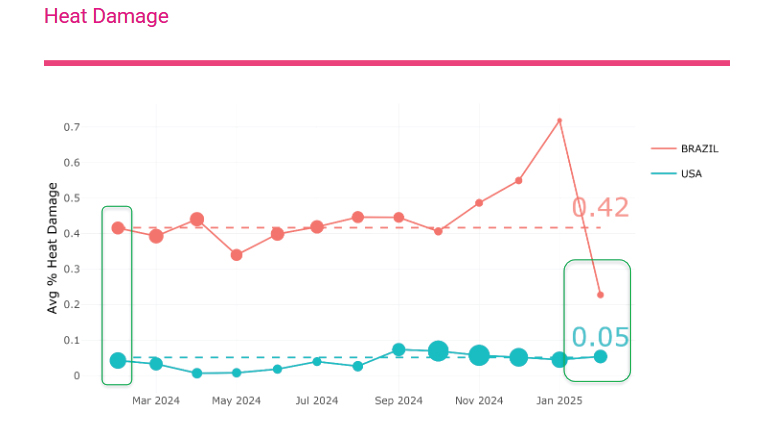
• Average Heat Damage Kernels of Brazilian soybean in February 2025 was 0.23% versus 0.42% in February 2024. Heat Damage content was 0.19% lower in February 2025
• Average Heat Damage Kernels of US soybean in February 2025 was 0.05% versus 0.04% in February 2024. February 2025 had a 0.01% higher Heat Damage Kernels
• In February 2024 Brazilian soybean had on average 0.38% higher Heat Damage Kernels than US Soybean while this difference decreased to 0.18% in February 2025
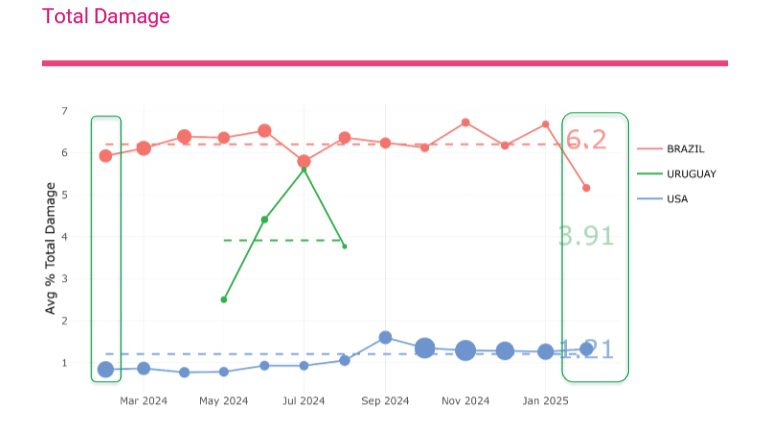
• Average Total Damage Kernels of Brazilian soybean in February 2025 was 5.16% versus 5.93% in February 2024. Total Damage content was 0.77% lower in February 2025
• Average Total Damage Kernels of US soybean in February 2025 was 1.33% versus 0.84% in February 2024. February 2025 had a 0.49% higher Total Damage Kernels
• In February 2024 Brazilian soybean had on average 5.09% higher Total Damage Kernels than US Soybean while this difference decreased to 3.83% in February 2025
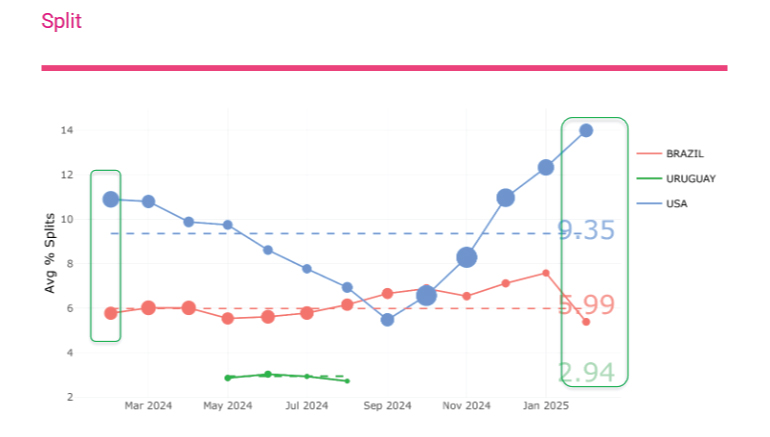
• Average Split Kernels of Brazilian soybean in February 2025 was 5.38% versus 5.77% in February 2024. Split content was 0.39% lower in February 2025
• Average Split Kernels of US soybean in February 2025 was 13.99% versus 10.89% in February 2024. February 2025 had a 3.10% higher Split Kernels
• In February 2024 Brazilian soybean had on average 5.12% higher Split Kernels than US Soybean while this difference increased to 8.61% in February 2025
US Soybean - Week over Week comparison*
When we compared US Soybean Quality on a weekly basis, we found that Moisture decreased 0.21%, Protein decreased 0.12%, Oil decreased 0.03%, FM increased 0.08%, Heat Damage increased 0.07%, Total damage decreased 0.11%, and Splits increased 0.57%. In terms of volume, the week from February 21 to February 27, total tonnage decreased by 222.24 Ktons
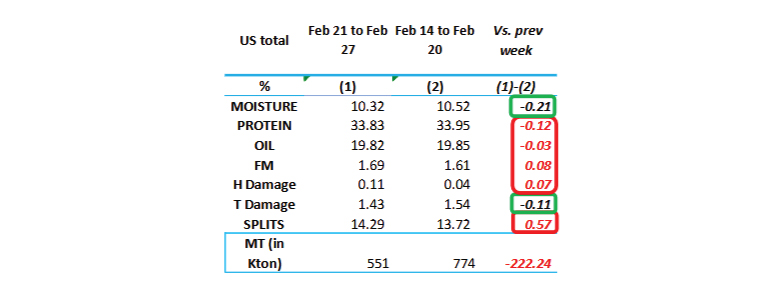
* FGIS cuts information every Thursday. Therefore, we are considering weeks from Friday to next Thursday.
(*) Notes
For USGX, North Atlantic and TXGX, we have included only values with Oil and Oil tested. These volumes
represent a range from 39% to 96% of total volume included at the FGIS database.
For PNW corridor, since FGIS database does not show values for Oil and Oil, we have included volumes
that show values in Oil, Foreign Mater, Oil and Total Damage.
Records updated by FGIS database up to Friday of previous week.
Brazilian data based on surveyors’ analysis
US PORTS
PNW includes CALIFORNIA, COLUMBIA R. AND PUGET SOUND
USGX includes EAST GULF, MISSISIPI RIVER, SOUTH ATLANTIC
TXGX includes NORTH TEXAS
THE LAKES corridor includes TOLEDO, LAKE ONTARIO and CHICAGO
INTERIOR represents loads at the INTERIOR of the USA